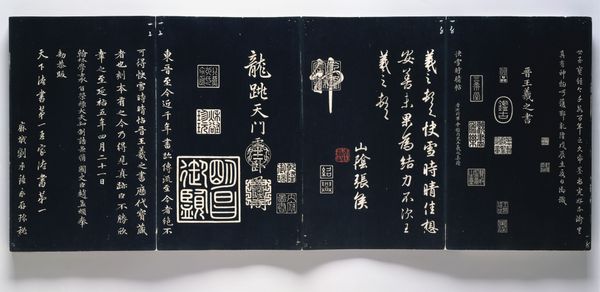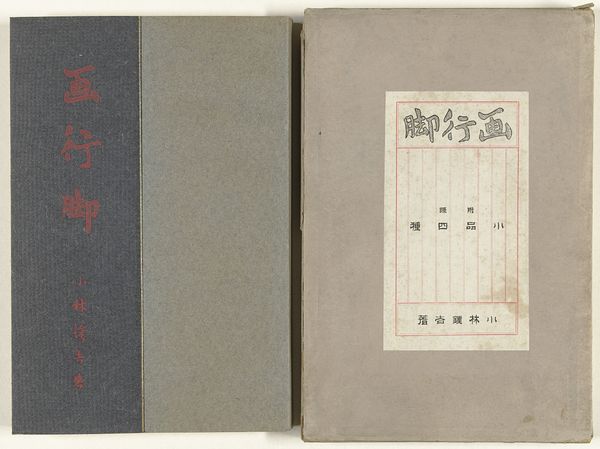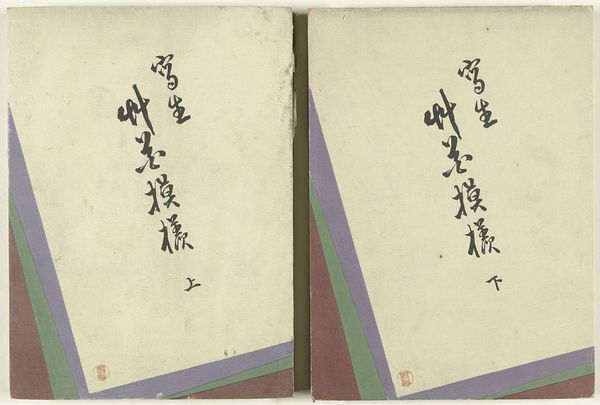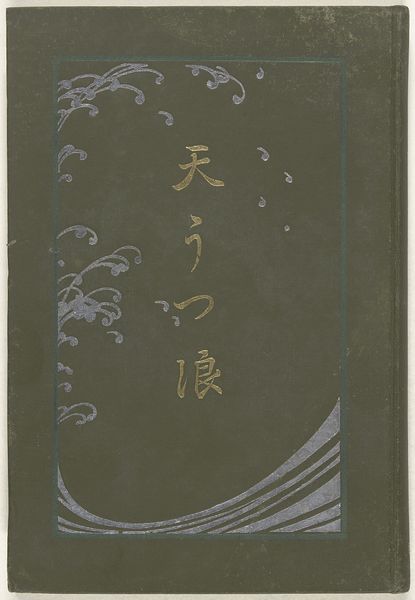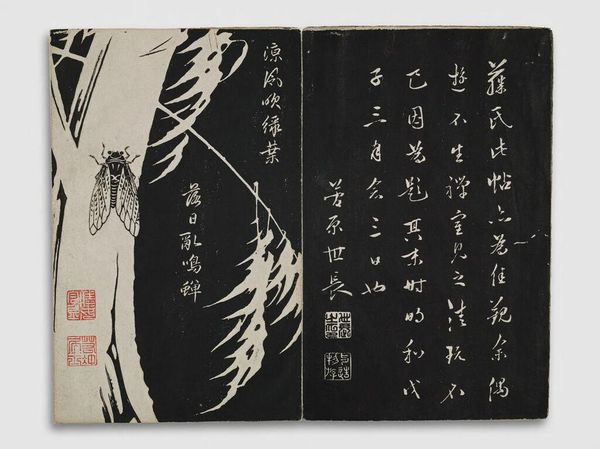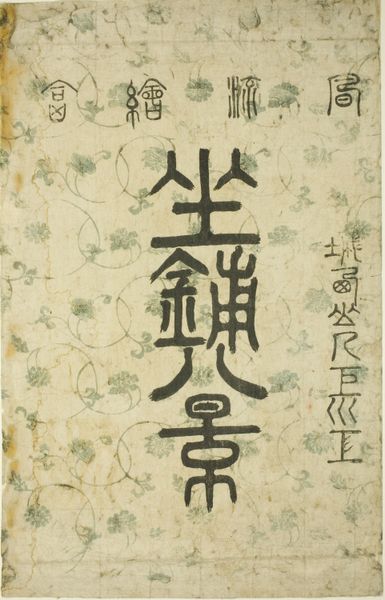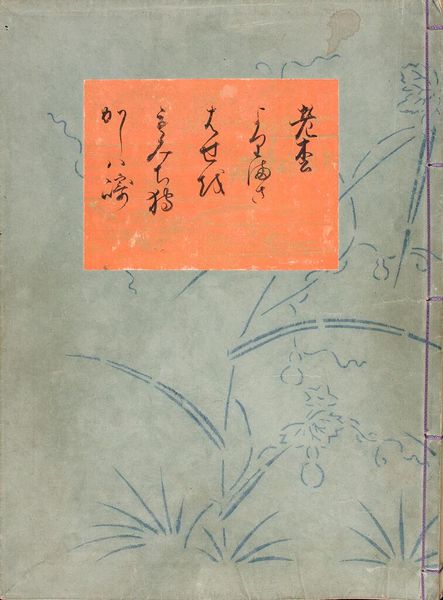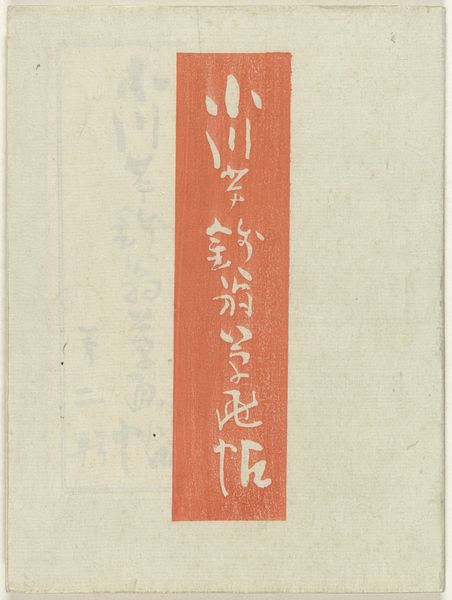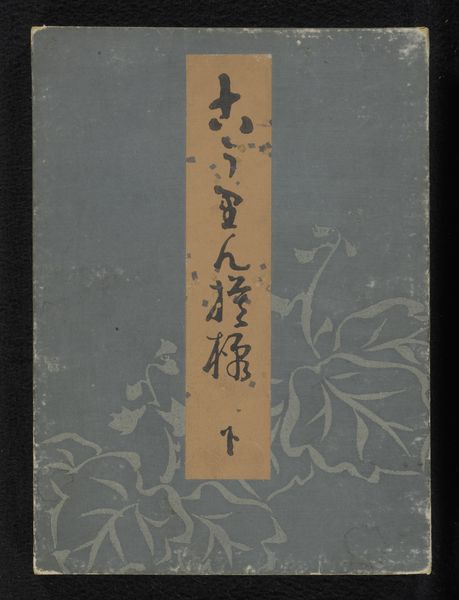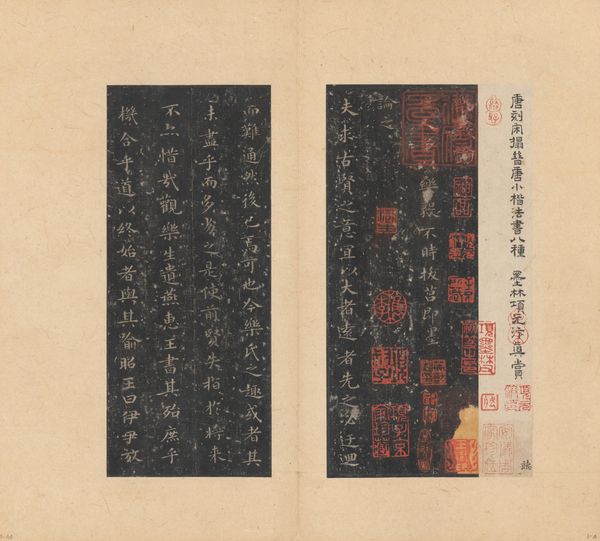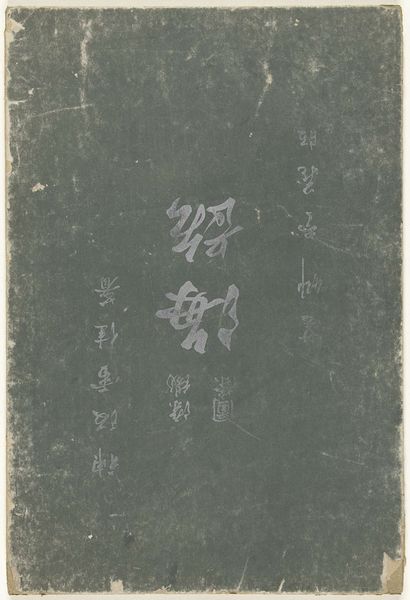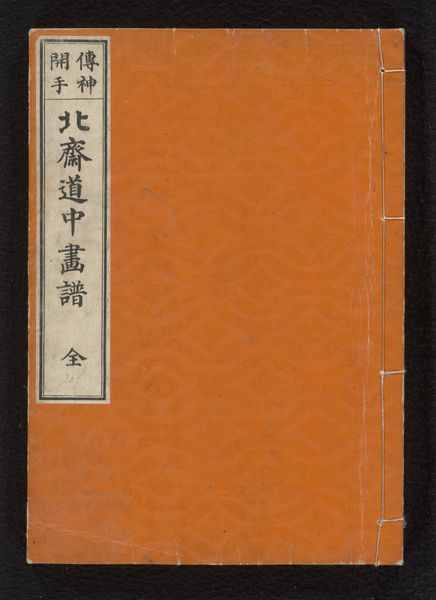
Dimensions: height 358 mm, width 243 mm
Copyright: Rijks Museum: Open Domain
Editor: This is "Honderd Vazen", or "One Hundred Vases", possibly from 1914. It's a print currently held at the Rijksmuseum, showcasing Japanese-style calligraphy and design. I'm struck by the almost block-printed nature of the silver leaves, contrasting with the elegant lettering. What are your thoughts on the materiality of this work? Curator: What interests me is not just the aesthetic appeal, but how this print participates in a wider network of production and consumption. The very act of creating multiples through printmaking changes the artwork's accessibility and therefore its social value. Who was this made for, and how did it circulate? Editor: That's a great point. Were these prints luxury items, or intended for wider distribution? Does the "craft" aspect of woodblock printing affect how we perceive their artistic value compared to unique works? Curator: Precisely! Consider the labor involved in creating the woodblocks, the paper production, the ink. These processes are all part of the artwork's narrative. Is the repetition devaluing or democratizing the image? And how does the use of a traditional method like woodblock connect this piece to historical practices and artistic lineages, even as it’s potentially updated with new materials or techniques? Editor: It’s fascinating to consider the socio-economic context tied to these materials and techniques. The "One Hundred Vases" then becomes less about pure artistic expression, and more about the conditions that allowed its creation and circulation. Curator: Exactly! Examining these conditions offers insights into artistic value. It reveals connections to cultural exchange and perhaps even societal shifts of the time. I am curious what material composition created these brown colors, and how available these inks were to this artist, considering how unique this color looks against more often produced print colors. Editor: So, instead of only looking at the final image, we're really looking at the whole chain of production and its place in society. I'll definitely approach art with more questions about its making now.
Comments
No comments
Be the first to comment and join the conversation on the ultimate creative platform.
